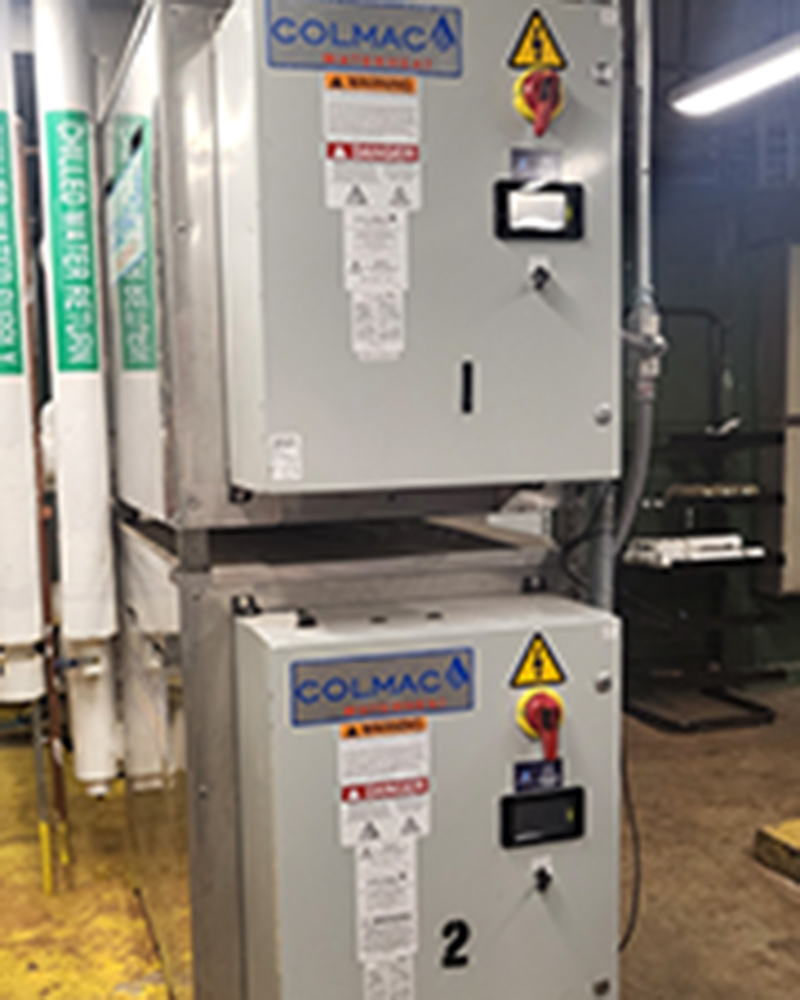
Manhattan, NY The New York Real Estate Journal (NYREJ) spoke with John McBride, PE, principal and director of electrical engineering at Goldman Copeland Associates, the New York City-based consulting engineering firm that has been upgrading and optimizing the mechanical, electrical, and plumbing systems of prominent buildings in Greater New York City, including Grand Central Terminal and the Empire State Building, for over 50 years.
NYREJ: New York City is in the midst of an extraordinarily dynamic period of reducing reliance on fossil fuels, and electrical engineering is playing a key role in that. What created that dynamism?
McBride: Three primary catalysts coincided. First, climate change has to be addressed, and the extreme weather of the past summer and early fall should have ended any debate about that. Second, buildings account for about 70% of New York City’s greenhouse gas emissions, so buildings have to be addressed. Third, a series of local laws require change, and three of them impose limits that are driving current action.
In 2021, New York City enacted Local Law 154 to phase fossil fuels out of new construction starting in 2024. New York thus became the largest city in the world to do so. In 2019, Local Law 97 set limits on greenhouse gas emissions for about 40,000 designated buildings starting on January 1, 2024. In 2009, with expansions in 2016, Local Law 88/134 required that, by 2025, lighting be energy-efficient in commercial buildings of 25,000 s/f or more and that spaces of 5,000 s/f or more be sub-metered. All three laws have near-term deadlines.
 NYREJ: All three also have major implications for electrical engineering. Isn’t that correct?
NYREJ: All three also have major implications for electrical engineering. Isn’t that correct?
McBride: Yes. In some cases, the role of electrical engineering is more obvious and, in other cases, more nuanced. But, in all cases, it’s crucial.
Local Law 154, for instance, is known as “the building electrification law,” as it forces a shift from natural gas and heating oil to electricity. Local Law 88/134 similarly addresses energy efficiency in lighting.
Local Law 97 is different because it requires broad reductions of greenhouse gas emissions from larger buildings. Many of those emissions stem from outdated and inefficient HVAC systems, which must be replaced. Doing so often requires electrical upgrades to power the systems, so electrical supply is crucial to the ultimate solution. Also, because reduction of the carbon impact of electricity is integrated with long-term plans to green the grid, moving to electric heating solutions is encouraged by this law.
NYREJ: Are new technologies available to address that challenge?
McBride: Yes, indeed. New and improved heat pumps are especially important to reducing carbon emissions. In addition, property owners are increasingly considering geothermal ground source heat pump energy as a partial solution. That’s thermal energy extracted or stored in the ground subsurface. The energy itself is free and reusable, but it has to be accessed from ground wells drilled within the building’s lot to provide efficient heating and cooling. Electric energy is needed to access it, and there is obviously a cost to the needed infrastructure for the installation. In the end, where viable, heat pumps will use a reduced level of electricity, making the electric grid more sustainable.
The City of New York has been a pioneer in advancing geothermal energy, and our firm helped the City create the first Geothermal Ground Source Screening Tool. It lets property owners easily assess the cost-effectiveness of geothermal heating and cooling for every lot in the city – nearly 900,000 lots. Two of my colleagues, Charlie Copeland and Tristan Schwartzman, wrote about it previously for the New York Real Estate Journal.
 NYREJ: How engaged has Goldman Copeland been in helping property owners address these looming deadlines?
NYREJ: How engaged has Goldman Copeland been in helping property owners address these looming deadlines?
McBride: Our firm has completed energy audits and retro-commissioning projects for over 50 million s/f of commercial properties, 10 million s/f of hospitals, and 10 million s/f of university facilities. Not all of those are in New York City. We have partnered with PSE&G and New Jersey Natural Gas to implement energy-saving programs in New Jersey, and we are working in New York State with NYSERDA to pilot a statewide energy-saving initiative. Audits completed since Local Law 97 came into effect have all been specifically tuned to provide buildings with long-term capital plans to meet requirements of that law at least until 2030.
NYREJ: Some of the specifics about these looming deadlines are still evolving. Is that correct?
McBride: Yes. Mayor Eric Adams recently announced a new initiative called “Getting 97 Done,” which proposes new rules for implementation of Local Law 97. The rules are controversial, because they provide a way for property owners to avoid penalties in 2024 under certain circumstances. As the Mayor’s Office said, “Under these rules, building owners may be able to mitigate compliance fines in 2024 — saving their limited resources for projects to reach compliance — but only if they can demonstrate concrete steps towards decarbonization that will result in them achieving their 2024 targets by 2027 and their 2030 targets on-time by 2030.” An online hearing for public comment on the proposed rules is scheduled for October 24.
With regard to Local Law 88/134, which mandates energy-efficient lighting by 2025, the penalties will also be the focus of an upcoming online public hearing. In this case, as with Local Law 97, the mandate is clear, but enforcement is at issue. For Local Law 88/134, the size of the penalties has never been determined, nor has the process of submitting proof of compliance. In this case, the penalties don’t begin until January 1, 2025, so there is a little more time.
Some buildings, however, will have large tasks to update their lighting and controls to comply, especially landmarked buildings, which were exempt from complying with the Energy Code but are not exempt from Local Law 88/134. This online public hearing is scheduled for October 26.
.jpg)
NYREJ: Isn’t it important to compliance to have the penalties set well in advance?
McBride: Absolutely, but pushback on penalties is inevitable, both because the local laws are aggressive in the first place and because there is a wide range of property owners in New York City. Some owners own a single building; others have large portfolios. The size of the portfolio and the nature of the buildings offer a wide range in property owners’ capacities to address the mandates in the time periods designated.
The most important thing is that there is dynamic activity to meet the respective local laws’ deadlines. The details may evolve, but the direction is clear: New York City is a global leader in reducing carbon emissions, and New York City’s property owners are playing a major role in making that happen.
